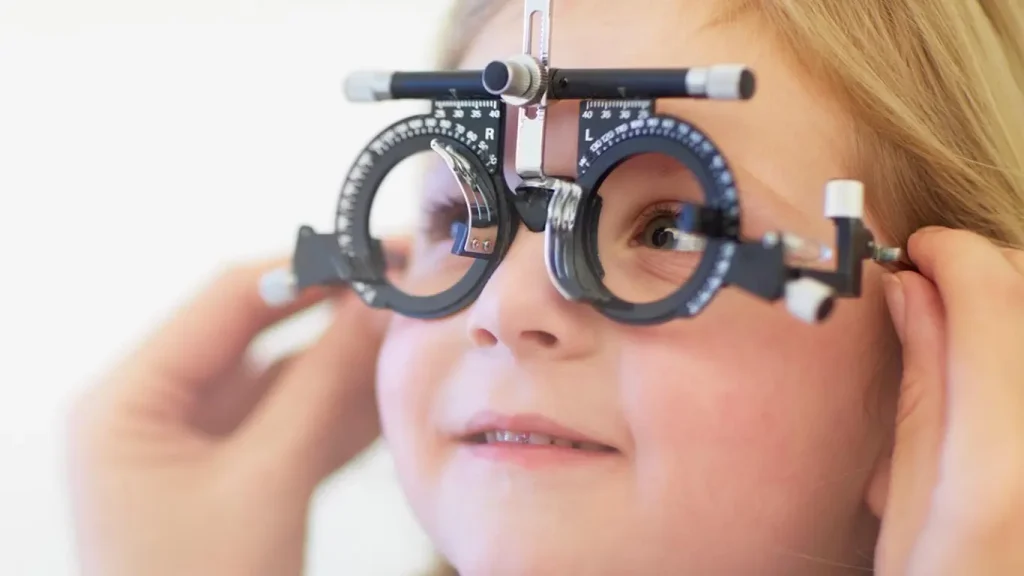
The most commonly observed eye conditions in children include squint (strabismus), lazy eye (amblyopia), congenital or pediatric cataracts, and retinopathy of prematurity (ROP). In rare cases, eye tumors may also occur.
Children’s Eye Care Services
At Garg Ophthalmic Centre, our Paediatric Ophthalmology Department offers comprehensive and specialized eye care for children under 16 years of age. Recognized both nationally and internationally, our center is known for its excellence in pediatric eye care and for developing child-friendly techniques for accurate diagnosis and effective treatment.
We manage a wide range of childhood eye conditions, including:
- Refractive Errors
- Strabismus (Squint)
- Amblyopia (Lazy Eye)
- Congenital Cataracts
- Congenital Glaucoma
- Genetic Eye Disorders
In collaboration with our retina specialists, we provide screening and treatment for Retinopathy of Prematurity (ROP)—a potentially serious eye condition affecting premature infants.
For children with visual impairment, we also offer low vision rehabilitation using both optical and non-optical aids to enhance remaining vision and improve quality of life.
With over 100,000 pediatric patients treated annually and approximately 4,000 pediatric surgeries performed each year, Garg Ophthalmic Centre stands as a trusted name in child eye care.
Squint Surgery (Strabismus Correction)
Squint, medically known as Strabismus, occurs when the eye muscles are not properly coordinated, causing the eyes to move in different directions. In a healthy visual system, both eyes move together in perfect alignment. However, in squinting, one eye may turn inward, outward, upward, or downward while the other eye looks straight ahead. This condition is more frequently seen in children, although it can also occur in adults.
When one eye is consistently misaligned, the brain begins to ignore the image from that eye to avoid double vision. Over time, this can result in Amblyopia (Lazy Eye)—a condition where the brain suppresses vision in the squinting eye, potentially leading to permanent vision loss if left untreated. Additionally, a squint interferes with the development of binocular vision and depth perception, both of which are essential for activities such as reading, driving, sports, and spatial coordination.
Why Early Treatment is Important
Squint does not improve on its own. Early diagnosis and treatment are crucial to prevent vision loss and to restore proper eye alignment. The sooner treatment is started, the better the chances of achieving optimal visual and cosmetic outcomes.
Treatment Options for Squint in Children
Treatment varies depending on the type and severity of the squint and may include:
- Eye muscle exercises to improve coordination
- Prism lenses in glasses to aid in alignment
- Squint surgery to adjust the eye muscles and realign the eyes
- Amblyopia therapy (e.g., patching or vision therapy) in cases where lazy eye is present
Our pediatric eye specialists will assess each child’s condition and recommend a personalized treatment plan to achieve the best possible results. Early intervention can restore alignment, improve vision, and boost confidence in growing children.
FAQs
1. What is a squint (strabismus)?
Squint, or strabismus, is a condition in which the eyes do not align properly. One eye may turn inward, outward, upward, or downward while the other eye looks straight ahead. It affects binocular vision and is more common in children.
2. Can a squint correct itself over time?
No. Squint rarely improves on its own and typically requires medical intervention. Delaying treatment may lead to amblyopia (lazy eye) or permanent vision loss in the affected eye.
3. At what age should squint be treated?
Squint should be treated as early as possible, ideally in early childhood, to prevent permanent vision impairment and to support the development of proper binocular vision.
4. Is squint surgery safe for children?
Yes. Squint surgery is a commonly performed and generally safe procedure. It is done under general anesthesia, and recovery is typically quick. Most children return to normal activities within a few days.
5. Will a child need more than one surgery?
In some cases, especially in complex or long-standing squints, additional surgeries may be required to achieve optimal alignment.
